Titanic sub debris and human remains have been recovered. But we still don’t have answers to these 9 questions
The desperate search for the missing Titanic submersible came to a tragic end when debris was discovered deep in the ocean. But, we still don’t know many crucial aspects of the doomed voyage. Rachel Sharp, Io Dodds, Bevan Hurley and Andrea Blanco report

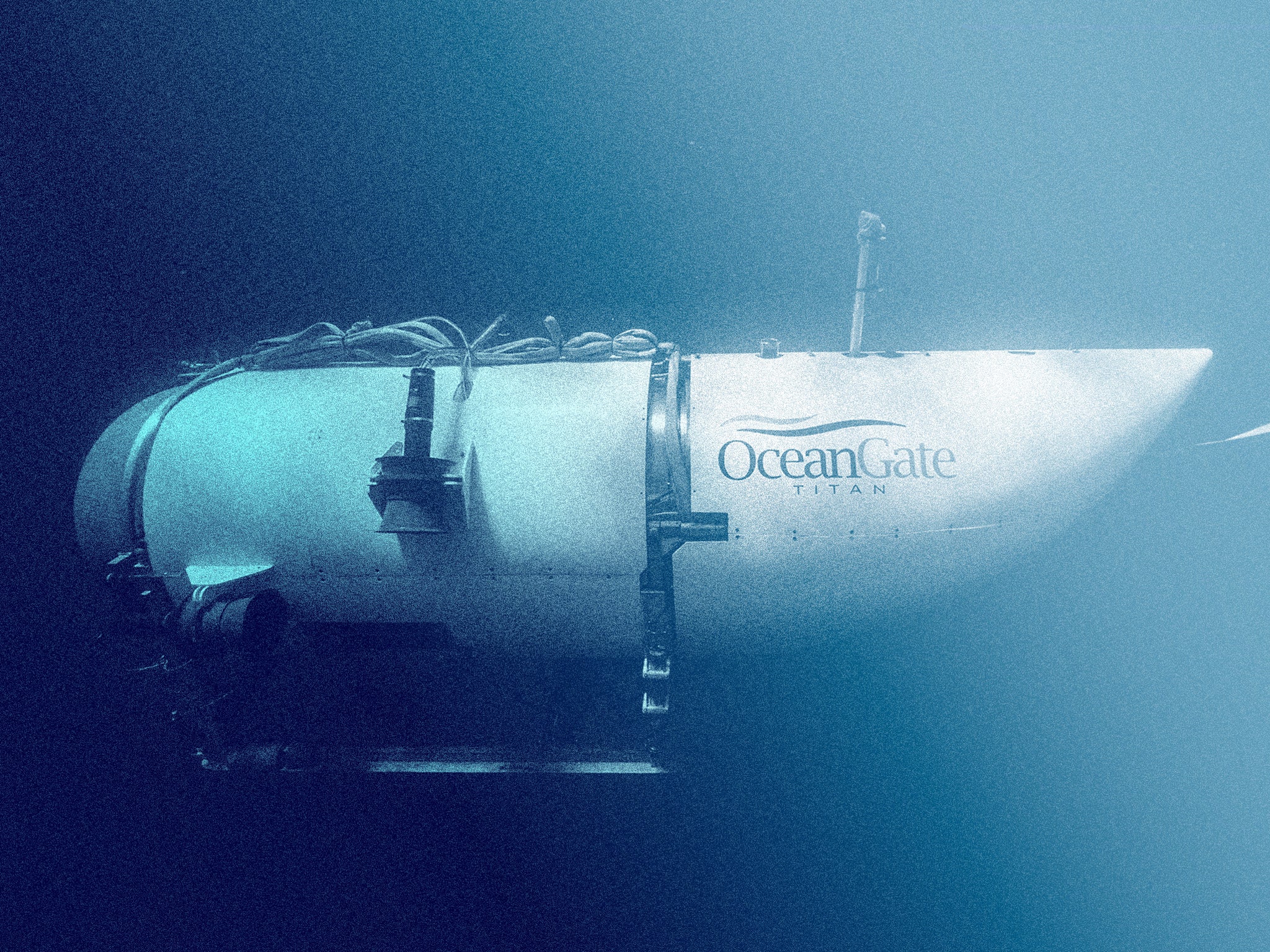
The desperate five-day search for the missing Titan submersible came to a tragic end on 22 June when debris was discovered close to the Titanic shipwreck.
OceanGate CEO and founder Stockton Rush, British billionaire explorer Hamish Harding, renowned French diver Paul-Henri Nargeolet and Pakistani businessman Shahzada Dawood and his 19-year-old son Suleman set off on a trip of a lifetime on 18 June, travelling around 13,000 feet below the surface of the Atlantic Ocean to visit the famed ocean liner’s wreckage.
But the five explorers met a chillingly similar fate to the doomed White Star Line ship more than a century earlier.
Follow the latest updates on the missing Titanic submarine here
Just one hour and 45 minutes into their expedition, OceanGate Expeditions’ Titan sub lost contact with its mother ship the Polar Prince on the surface.
This kicked off a huge search and rescue operation, using drones, remotely-operated vehicles (ROVs), ships and the most sophisticated technology and equipment available today.
On 22 June, hopes faded when a remotely operated vehicle (ROV) found five major pieces of debris from Titan on the sea bed around 500m from the bow of the Titanic shipwreck. Coast Guard Rear Admiral John Mauger confirmed that the discovery was consistent with a “catastrophic implosion”.
US defence sources – and Titanic film director James Cameron – later revealed that the Navy picked up the sound of the underwater implosion not long after the sub lost contact 105 minutes into its journey on 18 June.
Officials said on 28 June that debris and presumed human remains were recovered from the sea floor at the site of the deep-sea vessel’s fatal implosion.

Large pieces of wreck were transported to St John’s harbour by the Horizon Arctic ship, where it was seen being unloaded by a crane.
The latest developments added to a growing list of questions about what went wrong, whether the tragedy could have been avoided and what happens next.
Here, The Independent delves into those unanswered questions:
What caused the sub to implode?
Rear Adm Mauger told reporters on 22 June that the discovery of debris revealed that the sub and its occupants had fallen foul of a “catastrophic implosion”.
“In consultation with experts in the unified command, the debris is consistent with the catastrophic loss of the pressure chamber,” he said.
An underwater implosion means that the vessel – under intense pressure due to the depths of the ocean – suddenly collapsed inward.
Such an implosion would have been “incredibly quick” and “painless” for the passengers – taking place within just a fraction of a millisecond, Aileen Maria Marty, a former Naval officer and professor at Florida International University, told CNN.
“The entire thing would have collapsed before the individuals inside would even realize that there was a problem,” she said.
“Ultimately, among the many ways in which we can pass, that’s painless.”
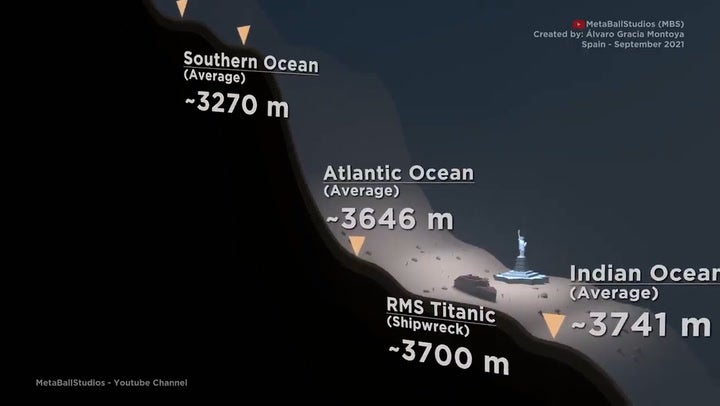
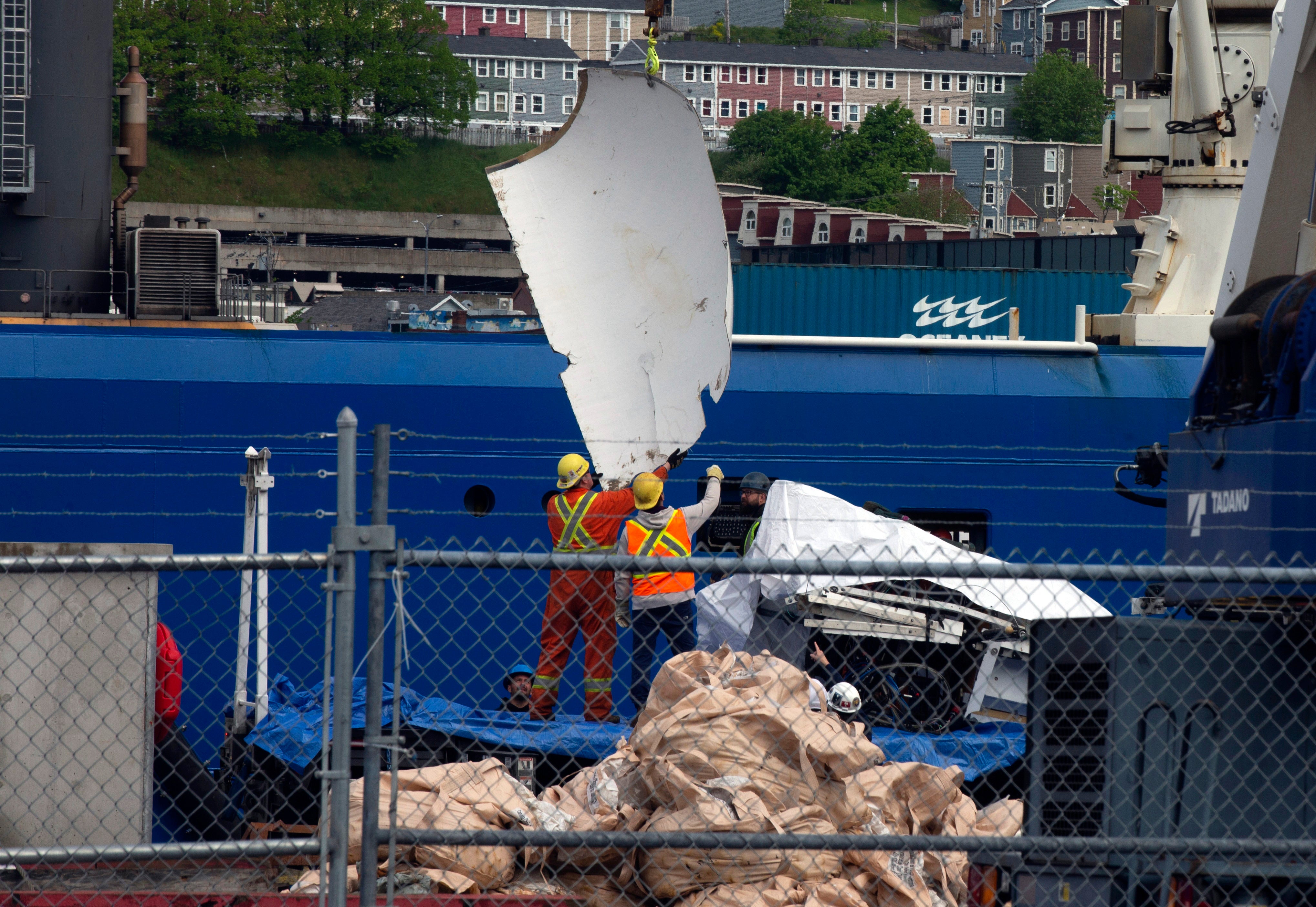
At the time of the implosion, the sub was descending to the Titanic wreckage which lies on the sea bed around 13,000 feet below sea level.
At that depth, any object – including a human body – is subject to a water pressure more than 300 times stronger than the pressure Earth’s atmosphere exerts on us every day. On the surface, we only need to withstand 14.7 lbs per square inch (Psi) of pressure, whereas the Titan had to withstand 5,500 psi.
It is unclear exactly where the implosion occurred but the journey to the wreckage was supposed to take around two hours and the vessel lost contact around one hour and 45 minutes in.
The cause of the implosion remains unclear at this time but several safety concerns with Titan’s vessel have come to light in recent days with members of the explorer community, Titanic director James Cameron and a whistleblower lawsuit all detailing potential issues with the sub.
The Titan was designed to survive the level of pressure at a depth of 13,000 feet, with two strong titanium domes at either end of the hull linked by a five-inch-thick cylinder of carbon fibre.
However, carbon fibre is far weaker than solid steel or titanium which submersibles are typically made from.
OceanGate founder Rush chose the material because it was a much lighter and cheaper option, offsetting it with a “real-time hull health monitoring system” that could, in theory, detect any deformations, cracks, or other faults rapidly enough for the crew to attempt an emergency ascent.
Yet at such depths, there is very little margin for error. If even one part of the hull fails and lets in water, the pressure would be so great, and the velocity of the incoming liquid so fast, that the sub and its occupants might be torn apart in mere milliseconds, monitoring system or not.
Mr Cameron has predicted that the carbon fibre and titanium hull could have been behind the disaster, calling the use of such weak materials a “horrible idea” and pointing out that the dives he has done in the past were in a ceramic submersible better suited to sustain pressure.
Was the cheap design to blame?
Besides the material choice, questions have also been asked about what appears to be a hotch-potch of “off-the-shelf components” used to put together the sub.
In an interview in November, OceanGate CEO Rush boasted that the sub was operated with a video game controller and was compiled of components bought from Camping World.
In a 2018 lawsuit brought by the company’s former director of marine operations David Lochridge, OceanGate was accused of ignoring safery concerns about the Titan.
Mr Lochridge had begun working with OceanGate in 2015 and was allegedly tasked with conducting a final safety review of the Titan. His lawsuit, which was later settled out of court, claims that he raised “critical safety concerns” about the sub’s “experimental and untested design” – only to be fired for his troubles.
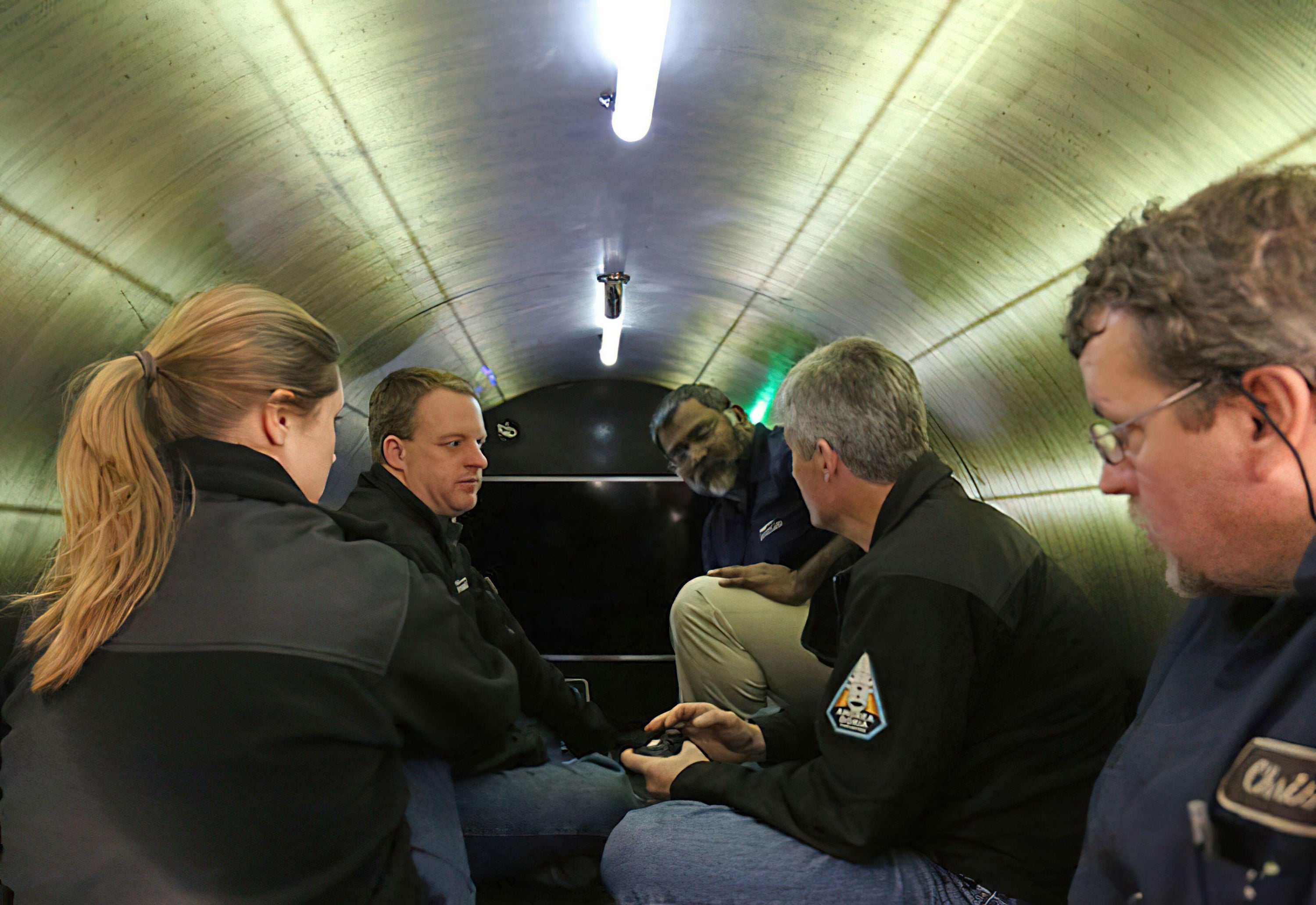
“Issues of quality control with the new submersible were raised, as there were evident flaws throughout the build process,” the lawsuit alleged, noting that no carbon fibre submersible had ever achieved its target depth of 4,000 metres.
Lochridge was also sceptical about the real-time monitoring system, which he believed would only show when a component was very close to failure – perhaps only “milliseconds before an implosion”. The lawsuit alleges that he pressed for the hull to be tested more rigorously, but was denied.
Worse, the lawsuit claims that the Titan’s single porthole was only certified to withstand the pressure at 1,300m and that OceanGate “refused to pay” for a porthole certified to 4,000m.
“Paying passengers would not be aware, and would not be informed, of this experimental design, the lack of non-destructive testing of the hull, or that hazardous flammable materials were being used within the submersible,” the lawyers said.
Why were the debris pieces so big?
Debris from the Titan was brought ashore by deep-sea robots on 28 June.
The Titan’s wreckage was seen for the first time in pictures after the Coast Guard announced on 22 June that ROVs (remotely-operated vehicles) found its chambers in a sea of debris 1,600ft from the bow of the Titanic, roughly 12,000ft below the ocean surface.
Pelagic Research Services, the company that operated the ROV that made the previous debris findings, said that its team had successfully completed off-shore operations and was now in the process of demobilisation after 10 days of work.
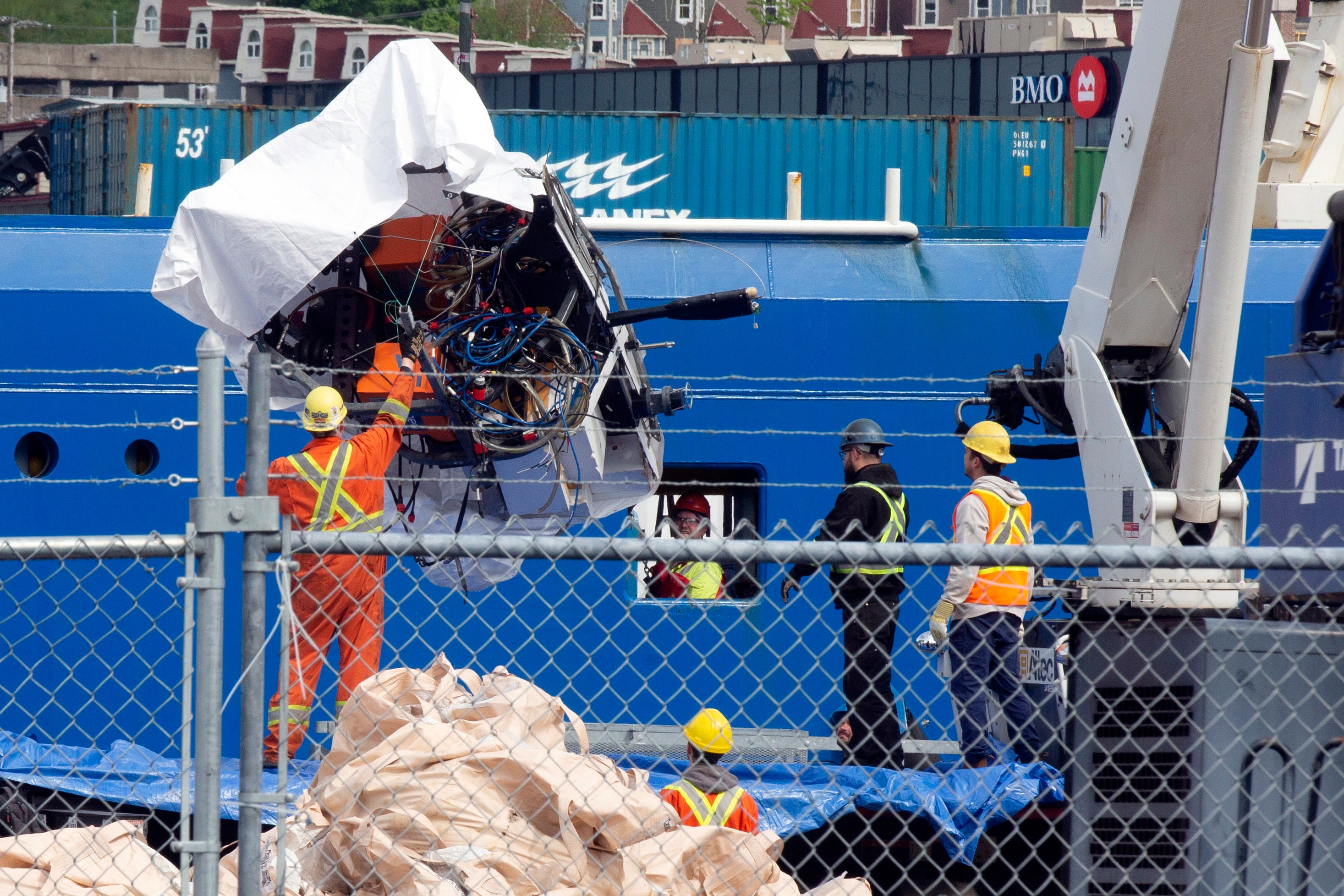
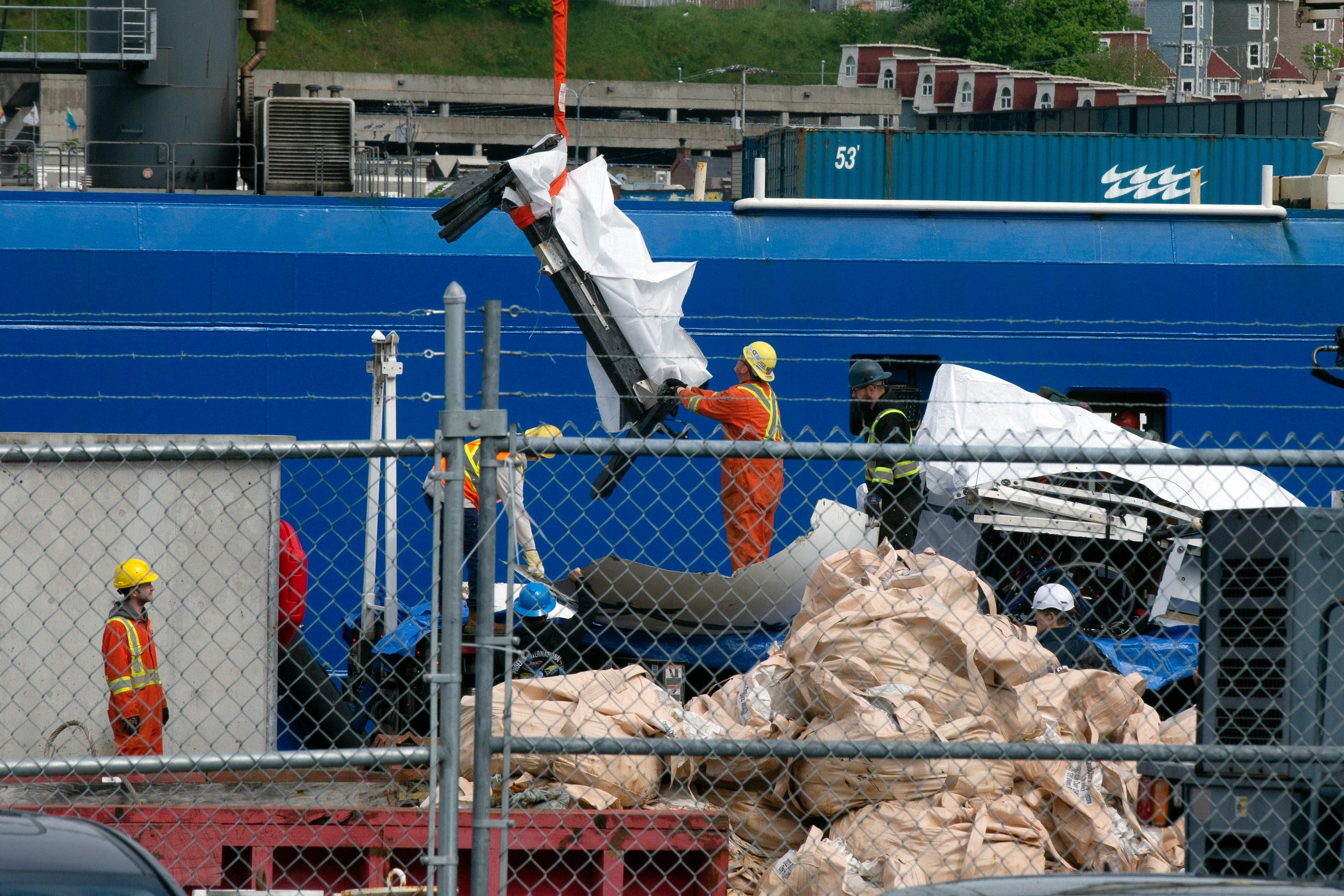
Photos from the wharf show what appeared to be several pieces of the submersible being lifted from the ship, including the nose cone with its distinctive circular window. The pieces were unloaded from the American ships Sycamore and Horizon Arctic at a port in St John’s, Newfoundland.
The US Coast Guard declined to comment on the investigation or the return of debris to shore. Representatives for the National Transportation Safety Board and Transportation Safety Board of Canada (TSB), which are both involved in the investigation, also declined to comment.
The large size of the recovered pieces sparked discussion as Coast Guard officials had warned the implosion had been “catastrophic.” But Northeastern University physics professor Arun Bansil said the wreckage is consistent with what officials determined happened to the Titan.
“Although it seems counterintuitive, large objects do not normally split apart into smithereens in an implosion or explosion. For example, a pressure cooker usually explodes with the top blown off but the body remaining intact,” Mr Bansil told The Independent.
“Initial failure of Titan would have occurred at its weakest links such as defects in the hull. Once a crack opens, however, large pieces of the hull will no longer experience very violent forces and remain more or less intact.”
Speaking after the evidence was recovered, the Marine Board of Investigation’s (MBI) chairman, Captain Jason Neubauer, said on 28 June: “I am grateful for the co-ordinated international and inter-agency support to recover and preserve this vital evidence at extreme offshore distances and depths.
“The evidence will provide investigators from several international jurisdictions with critical insights into the cause of this tragedy.
“There is still a substantial amount of work to be done to understand the factors that led to the catastrophic loss of the Titan and help ensure a similar tragedy does not occur again.”
How did officials recover ‘presumed human remains’?
The Coast Guard had previously said that due to the depth of the debris and the nature of the passengers’ deaths, it was unlikely that their remains will ever be found.
“This is an incredibly unforgiving environment down there on the sea floor and the debris is consistent with a catastrophic implosion of the vessel,” Rear Adm Mauger said on 22 June. “And so we’ll continue to work and continue to search the area down there, but I don’t have an answer for prospects at this time.”
But on 28 June, the service announced that it had recovered “presumed human remains” from the sea floor. It is unclear how it was determined the remains were human but medical professionals will now perform a formal analysis.
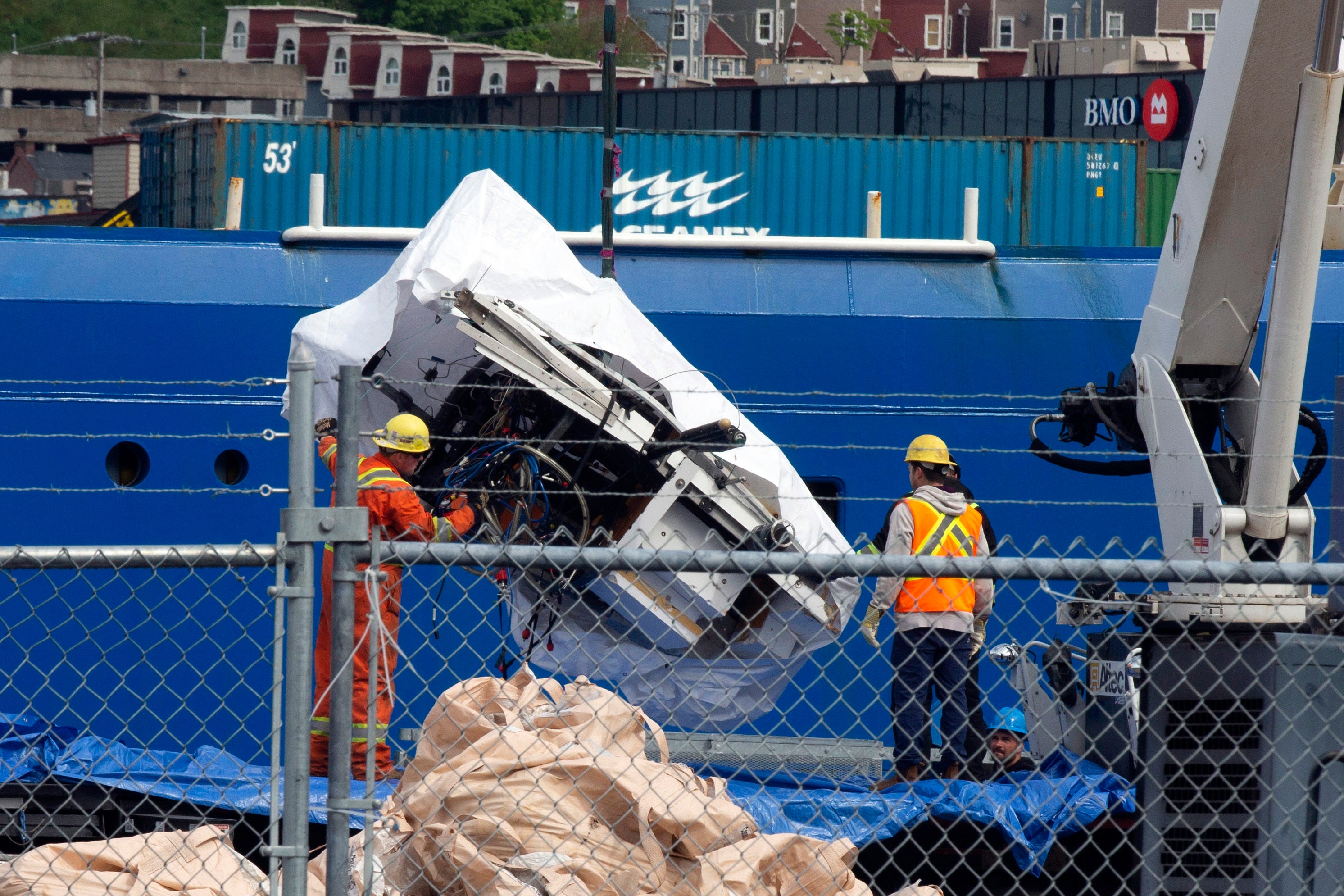
Why is OceanGate still advertising tours?
Reports emerged last week that OceanGate Expeditions closed its doors indefinitely after its CEO Stockton Rush, British billionaire Hamish Harding, French diving expert Paul-Henri Nargeolet and Pakistani businessman Shahzada Dawood and his 19-year-old Suleman died when the company’s Titan sub imploded while on a tour to the Titanic’s wreck.
But more than 10 days after the tragedy - and a week after it was confirmed, the OceanGate website still features available dates for two separate eight-day expeditions next year.
One pilot, one “content expert” and three mission specialists — or passengers without any previous experience needed who pay $250,000— participate in every dive.OceanGate not only hosted tours to the famed shipwreck, but also to the Azores Archipelago in Portugal and to the Bahamas.
Expeditions to the Titanic began in Newfoundland, Canada, where a ship set sail from St John’s port on a 400-nautical-mile journey to the wreck site. The doomed expedition last week was on its third day when the Titan was launched onto the sea and lost contact with its mothership just one hour and 45 minutes into its descent.
The company’s future is now uncertain, as industry experts have told the New York Post that all planned expeditions to the Titanic have been called off.
The Explorers Club said it knows of no plans still in place for scientific exploratory trips to the Titanic’s wreck 12,500 feet below the ocean’s surface. Commercial expeditions have also been reportedly grounded. The Independent has reached out to OceanGate for comment.
If the sub wasn’t safe, how was it able to take tourists on expeditions?
Despite tourists forking out $250,000 for the privilege of an expedition to the Titanic wreckage, OceanGate was largely able to operate unregulated.
Because the Polar Prince and the Titan operated in international waters, they were not subject to regulation by any country, including a US law requiring passenger submersibles to be registered with the Coast Guard.
In 2018, 38 members of the Marine Technology Society’s Manned Underwater Vehicles committee wrote to Stockton Rush expressing “unanimous concern” about the way Titan had been developed.
According to The New York Times, the committee was alarmed that OceanGate had not subjected Titan to a standard risk assessment by Det Norske Veritas (DNV), an international maritime classification body that writes and maintains technical standards for undersea vehicles.
“While this may demand additional time and expense, it is our unanimous view that this validation process by a third party is a critical component in the safeguards that protect all submersible occupants,” the letter said.
OceanGate defended its decision in a 2019 blog post, writing: “When OceanGate was founded the goal was to pursue the highest reasonable level of innovation in the design and operation of manned submersibles. By definition, innovation is outside of an already accepted system... Bringing an outside entity up to speed on every innovation before it is put into real-world testing is anathema to rapid innovation.”
Rush did claim however that the company had worked with Boeing, NASA and the University of Washington.
All three denied this claim.
What were the banging sounds?
On 20 June, bouys detected “tapping sounds” coming from the search area, raising slim hopes that survivors could yet be found.
“We don’t know the source of that noise, but we’ve shared that information with Navy experts to classify it,” US CoastGuard Rear Admiral John Mauger told CBS This Morning.
The sound was detected at 2am local time by a Canadian P-3 aircraft.
It first came every 30 minutes and was heard again four hours later, the internal government memo obtained by CNN states.
Officials admitted that the noises were “inconclusive” and were being analysed by Navy experts.
“With respect to the noises specifically, we don’t know what they are, to be frank with you,” Captain Jamie Frederick of the First Coast Guard District told reporters on 21 June.
Mr Frederick said that the area of the search was now twice the size of the state of Connecticut on the surface and was being conducted 2.5 miles deep below the Atlantic.
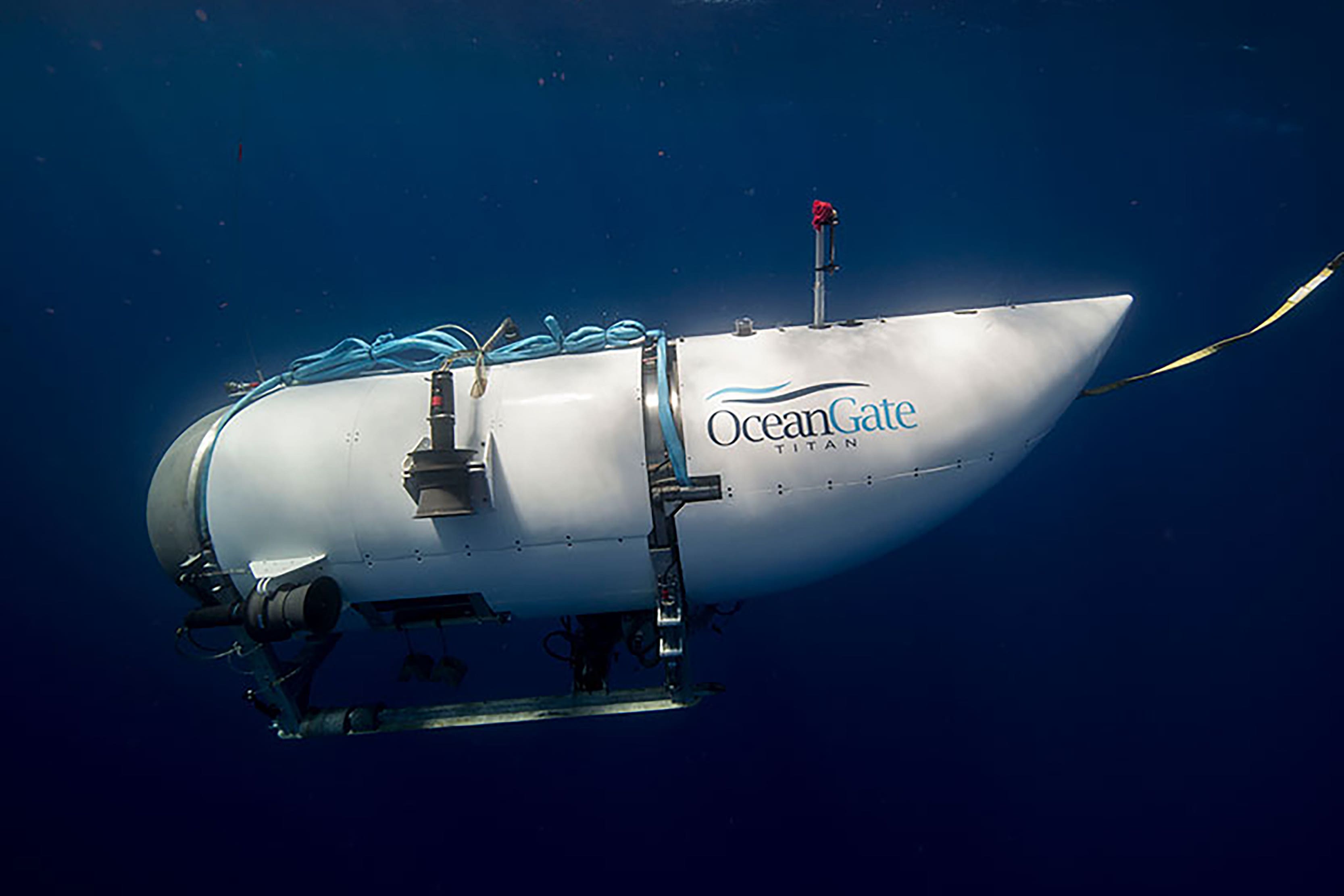
“This is a search and rescue mission, 100 per cent,” Cap Frederick said. “When you’re in the middle of a search and rescue case, you always have hope.”
He added: “Several P3 flights have heard noises yesterday and we relocated assets immediately.
“I think you need to be careful, we need to have hope but I can’t tell you what the noises are but we are searching where the noises are and that’s all we can do at this point. My understanding is that the P3 had heard some noises today as well.”
Carl Hartsfield of the Wood Hole Oceanographic Institution told reporters that the noises had been described as “banging” and that they were being analysed by maritime acoustics experts. He went on to say that there was a large number of vessels now in the area which all give off noises picked up by sensors.
Some experts suggested that the banging sound was the noise of debris – from either the Titanic or the Titan – in the ocean.
Chris Parry, a former British Royal Navy commander, told TalkTV the sounds could have come from any number of underwater sources.
“You get a lot of mechanical noise in the ocean. Trying to differentiate it from tapping noises is a fool’s errand.”
The Coast Guard admitted on 23 June that the US Navy had detected sounds consistent with an implosion or explosion sometime after the Titan vanished on 18 June and before rescue efforts were launched the next day. Officials said that the information was not released at the time to the public because it was not definitive.
Why was so much money and effort thrown into the search if the US knew it had already imploded?
One of the biggest questions is why US officials did not disclose the fact that Navy equipment had picked up the sound of the implosion – and why so much money and effort were funnelled into the search and rescue operation if they knew it was futile.
On 22 June, not long after the US Coast Guard confirmed that debris from the Titan had been discovered and that the five men had perished in a “catastrophic implosion”, it emerged that secret US Navy underwater microphones had detected the sub’s implosion not long after it lost contact with its mother ship on 18 June.
Multiple reports revealed that the acoustic detection system – typically used to monitor enemy submarines – heard an implosion on 18 June close to the site where the debris was located roughly 500m from the Titanic shipwreck.
The US Coast Guard confirmed the reports to The Independent, saying that the US Navy detected an “anomaly consistent with an implosion or explosion in the general vicinity of where the Titan submersible was operating when communications were lost”.
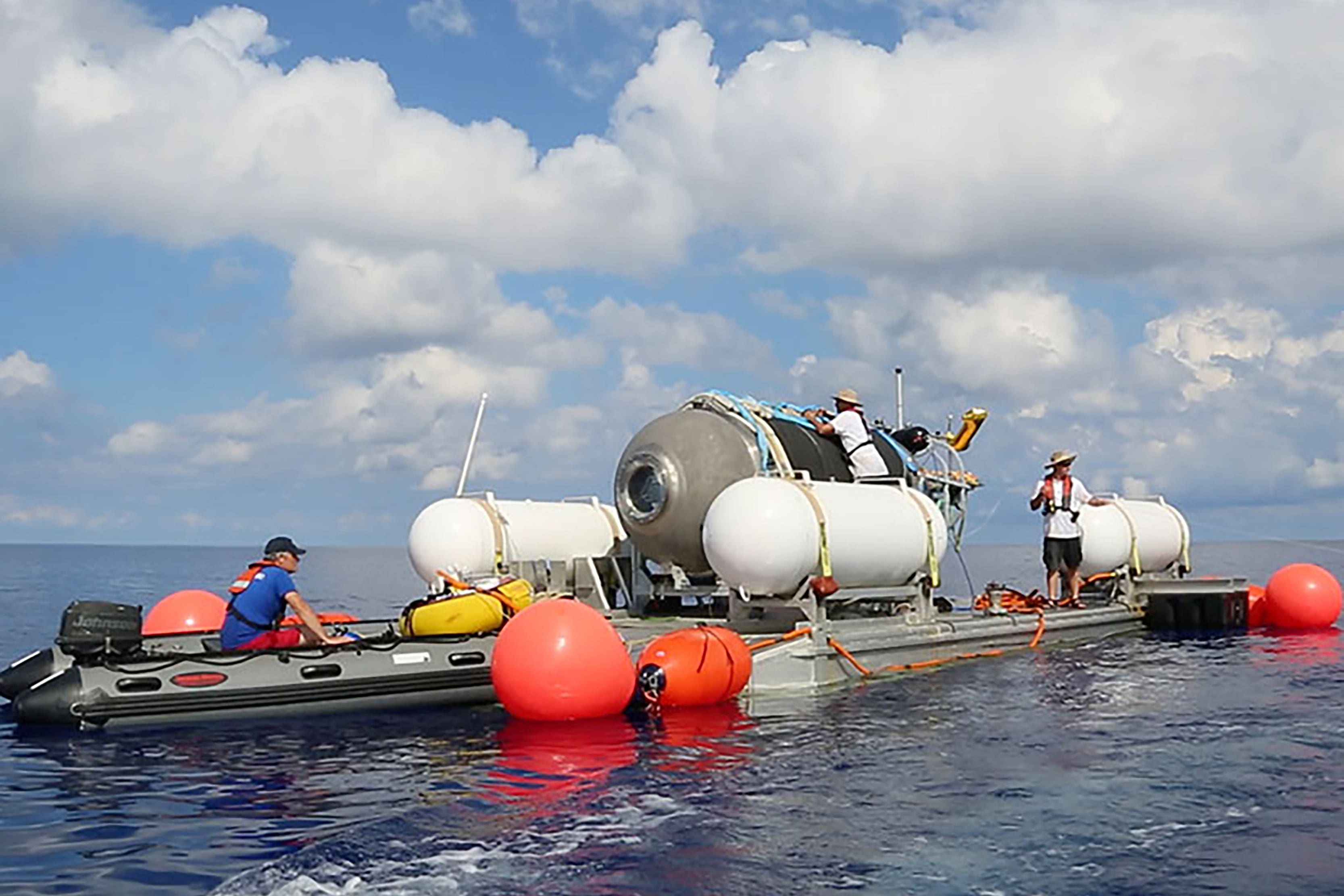
The sound was “consistent with the incident” of the catastrophic implosion, which left the five men on board the vessel dead, adding that no more similar sounds were heard throughout the search and rescue mission.
The information was “immediately shared” with the Incident Commander, and once it had been considered with all of the acoustic data that had been compiled, “the decision was made to continue our mission as a search and rescue” because the noise was “not definitive at the point”, the spokesperson said.
While the Navy passed the information to the US Coast Guard – which was leading the search – the information was not released to the public during the operation.
Titanic director Mr Cameron said on 22 June that he too had known the fate of the five inside the sub just hours into the rescue mission.
“We got confirmation within an hour that there had been a loud bang at the same time that the sub comms were lost,” he said. “A loud bang on the hydrophone. Loss of transponder. Loss of comms. I knew what happened. The sub imploded.”
Despite this, officials did not reveal this information to the public – leading to hope that the five men could still be found alive – and continued in what appeared to be a race against time to find the five men alive.
The US Coast Guard said the Unified Command – the US Coast Guard, US Navy, and Canadian Coast Guard - made its decision to not disclose the information on the “acoustic anomaly” because they did not want to disrupt the search and rescue mission when their priority was “making every effort to the save lives of all on board” the submersible.
“So having unconfirmed information did not change that”, they said, adding: “We did not want to release any information that was unconfirmed.”
Will OceanGate face legal action?
Prior to embarking on the journey, the five passengers signed liability waivers accepting that it could result in death.
But, despite this, the waiver may not shield OceanGate from potential lawsuits by the victims’ families.
Timothy E Allen, an attorney and former Secret Service agent, said in a statement to The Independent that waivers won’t protect the company if it turns out there was defects with the sub.
“Submarines operate in a high-pressure environment, and any flaws or weaknesses in the construction, design, or materials used can potentially lead to catastrophic failures such as implosion,” he said.
“If it can be established that the implosion was caused by inherent defects in the mechanics or engineering of the submarine, the responsible party may be held liable, even if a waiver was signed.”
Safety investigators from the Transportation Safety Board (TSB) of Canada made inquiries on Titan’s main support ship, the Polar Prince, after it docked in St John’s harbour on Saturday. The US Coast Guard has also convened a marine board that is tasked with conducting an investigation and issuing a report.
The TSB said it has inspected, documented, and catalogued the materials from the debris of Titan for its safety investigation. The safety body said its investigation team has taken possession of the deep-sea vessel’s voyage data recorder, which has been sent to its engineering laboratory in Ottawa for further analysis.
US, UK, and French authorities will work together in accordance with international agreements, as they are “substantially interested states” under the International Maritime Organisation Casualty Investigation Code.



Join our commenting forum
Join thought-provoking conversations, follow other Independent readers and see their replies
Comments